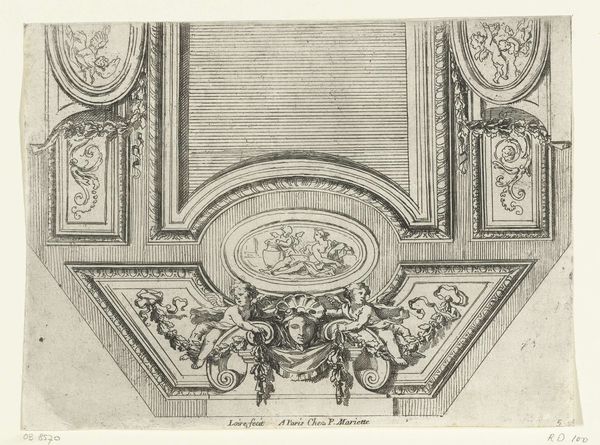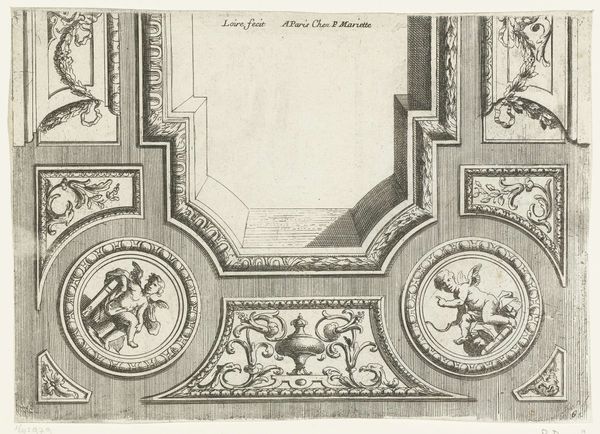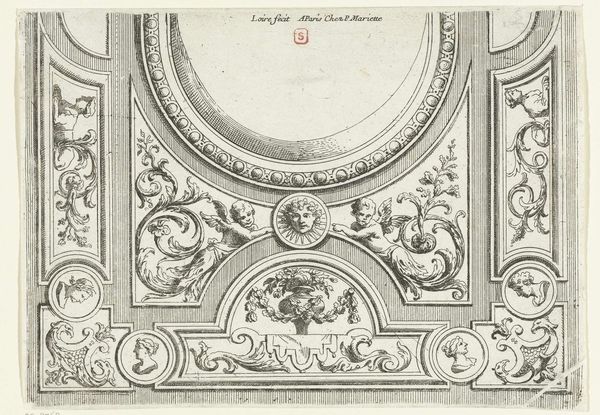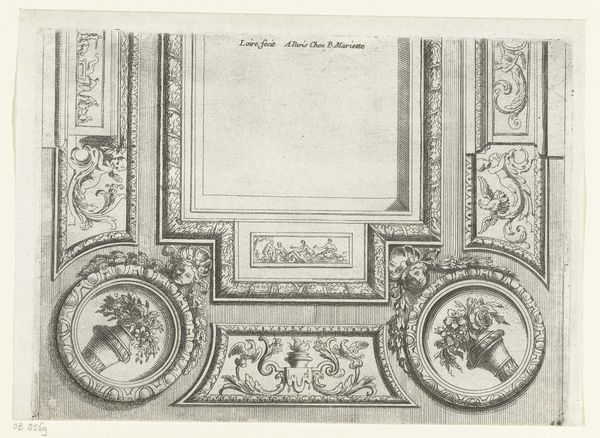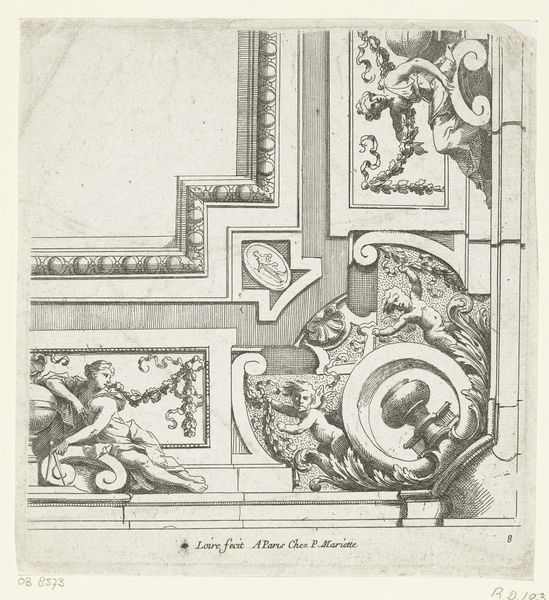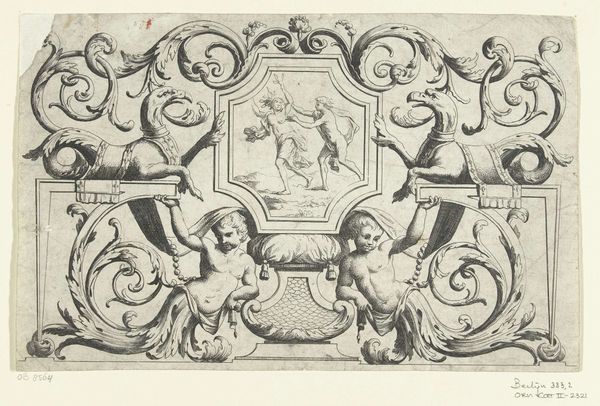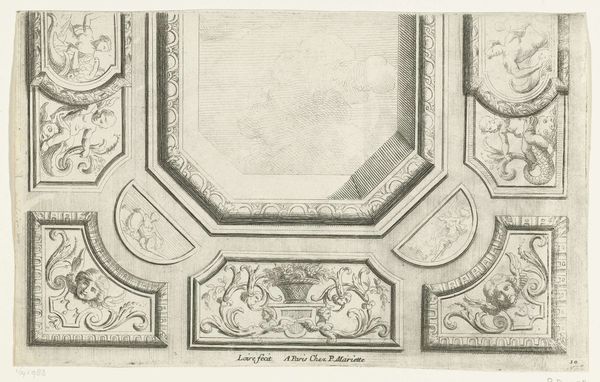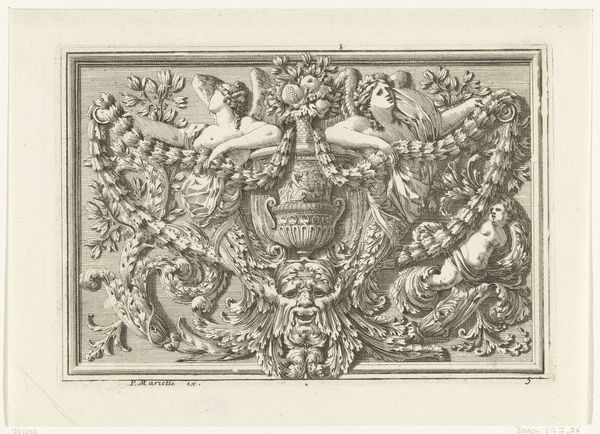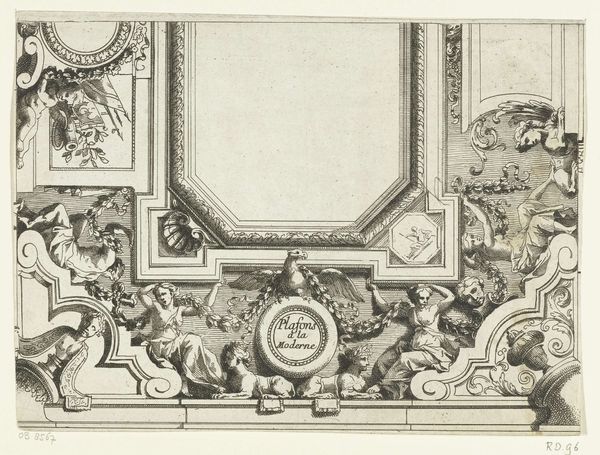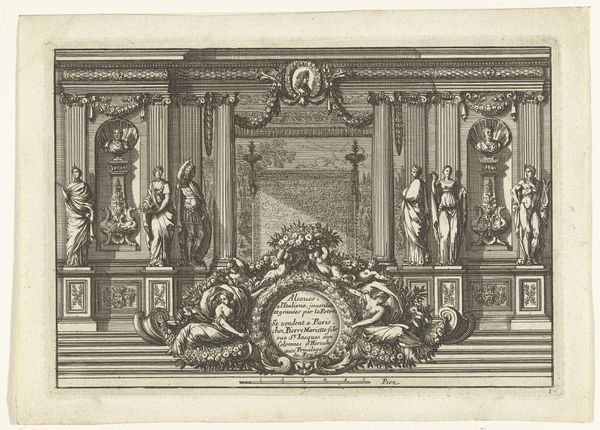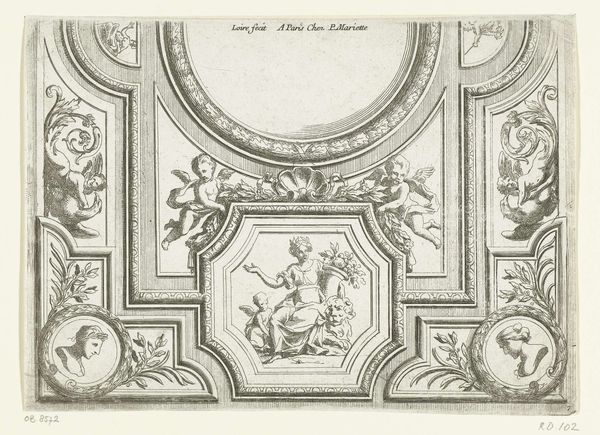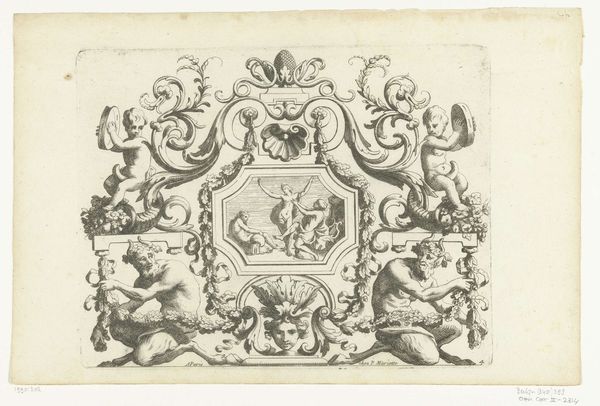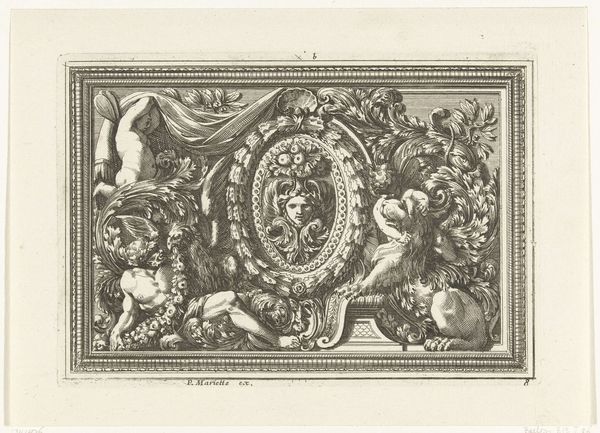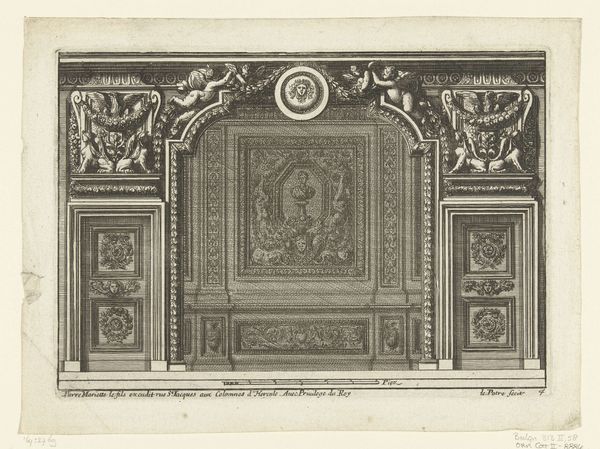
drawing, ornament, engraving
#
drawing
#
ornament
#
baroque
#
pen drawing
#
old engraving style
#
geometric
#
line
#
engraving
Dimensions: height 171 mm, width 243 mm
Copyright: Rijks Museum: Open Domain
Editor: Here we have Nicolas Pierre Loir's "Half Plafond," a drawing and engraving created sometime between 1634 and 1716. The precision of the lines is striking. What strikes me, though, is the implied grandeur, like a fragment hinting at some massive, opulent space. What’s your interpretation? Curator: Indeed. This engraving offers us a glimpse into the political and cultural powerplays of the Baroque era. These plafonds, or ceiling decorations, weren’t just ornamentation; they were powerful statements about status and control. Consider where these were located: palaces, government buildings. The aristocracy controlled not just the buildings but the imagery *within* them, right? Editor: So, even a fragment carries that weight? It's interesting how such detailed ornamentation speaks to themes of control and societal messaging. Curator: Precisely. This isn't just decorative—it's a calculated display of power and influence. How do you see the classical imagery, like the figures and the geometric forms, playing into that? Editor: They lend a sense of authority, linking the present to a glorious past, maybe? It’s like they're saying, “We are the inheritors of this legacy." I guess I had never considered that ornament could also communicate an idea or position. Curator: Exactly! And by understanding these visuals in their historical context, we understand how art becomes a participant, even a weapon, in socio-political discussions. What do you make of that idea? Editor: It adds a new dimension to viewing art; beyond aesthetic appeal, it is a statement that reflects and reinforces its cultural environment. That's something I'll definitely consider from now on.
Comments
No comments
Be the first to comment and join the conversation on the ultimate creative platform.
